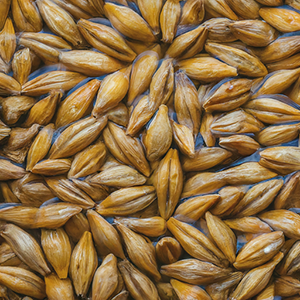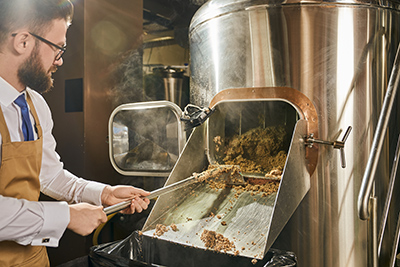Contents
The malting process is a process that grains, mainly barley, go through because of their incredible capacity to form enzymes during germination. Once malt has been extracted, it may be used in a variety of ways:
- As a beverage
- Dehydrated to a dry malt extract that may be reconstituted by adding water.
- Concentrated to form malt syrup or powder. Both are rich in diastase (a type of amylase). These enzymes predigest starch, converting it into a kind of sugar called maltose. Diastase-rich malt syrup and powder are used in the baking industry to add to the dough. Thus, part of the starch is converted to maltose sugar, which makes the dough lighter, easier to digest, and sweeter.
- Ferment it to produce beer or whiskey, adding other grains to the malt. Yeasts ferment maltose (malt sugar), converting it to alcohol.

Nutritional Value of Malt
Malt contains:
- Water (eighty-six percent)
- Carbohydrates (13.4 percent) consist primarily of maltose sugar resulting from the action of diastase on starch.
- Very few proteins (0.29 percent): Most of the proteins found in barley are not water-soluble and do not become part of the malt.
- Very few fats (0.12 percent), vitamins, and minerals.
- Enzymes: Diastase, which digests starch transforming it into maltose. Although it is in small amounts, it is responsible for the digestive action of malt since it facilitates the digestion of the starch in foods. The typical malt aroma is due to the caramelization of its sugar (maltose), which also adds to its digestive effect.
Nutritional Value of Malted Grain and Flour

Malted grain (germinated and roasted) is similar in composition to the natural whole grain but with the following differences:
- More B group and a small amount of vitamin C formed during germination.
- Less starch and more sugar because of enzymatic action (diastase).
- Diastase: Enzyme or fermenting agent formed during germination from the proteins found in the aleurone layer (one of the bran layers of grain). It promotes the digestion of the grain’s starch and other starches in the digestive tract.
As a result, malted barley, and its flour, are:
- Richer in vitamins and minerals,
- Easier to digest, and
- Sweeter and more aromatic than natural barley.
Malt flour is usually added to wheat flour in the bread-making process.
Malt beverage makes an excellent substitute for coffee. It is:
- Healthful and aids digestion,
- Nutritious (contains maltose, sugar, and some amount of vitamins and minerals),
- It does not excite the nervous system or produce addiction, as does the caffeine in coffee.

The Malting Process
Barley grains:
- Controlled germination of the grains for several days.
- Applying moderate heat and drying (roasting) to stop germination without deactivating or destroying the enzymes produced during germination.
- Remove tiny sprouts and roots from the malted grains.
Malted grains:
Ground = Malt flour.
Soaked in water = Malt: Malt is an aqueous extract of malted barley grains, that is, grains germinated and toasted.
DISCLAIMER: All content on this website is presented solely for educational and informational objectives. Do not rely on the information provided as a replacement for advice, diagnosis, or treatment from a qualified medical expert. If you are pregnant, nursing, or have any preexisting medical concerns, talk to your doctor before using any herbal or natural medicines.
REFERENCES
- George D. Pamplona-Roger, M.D. “Encyclopedia of Foods and Their Healing Power.” George D. Pamplona-Roger, M.D. Encyclopedia of Foods and Their Healing Power. Trans. Annette Melgosa. Vol. 2. Chai Wan: Editorial Safeliz, 2005. 164. Print. [malting process]
- American Society of Brewing Chemists (ASBC): https://www.asbcnet.org/
- Craft Maltsters Guild: https://www.craftmalting.com/
